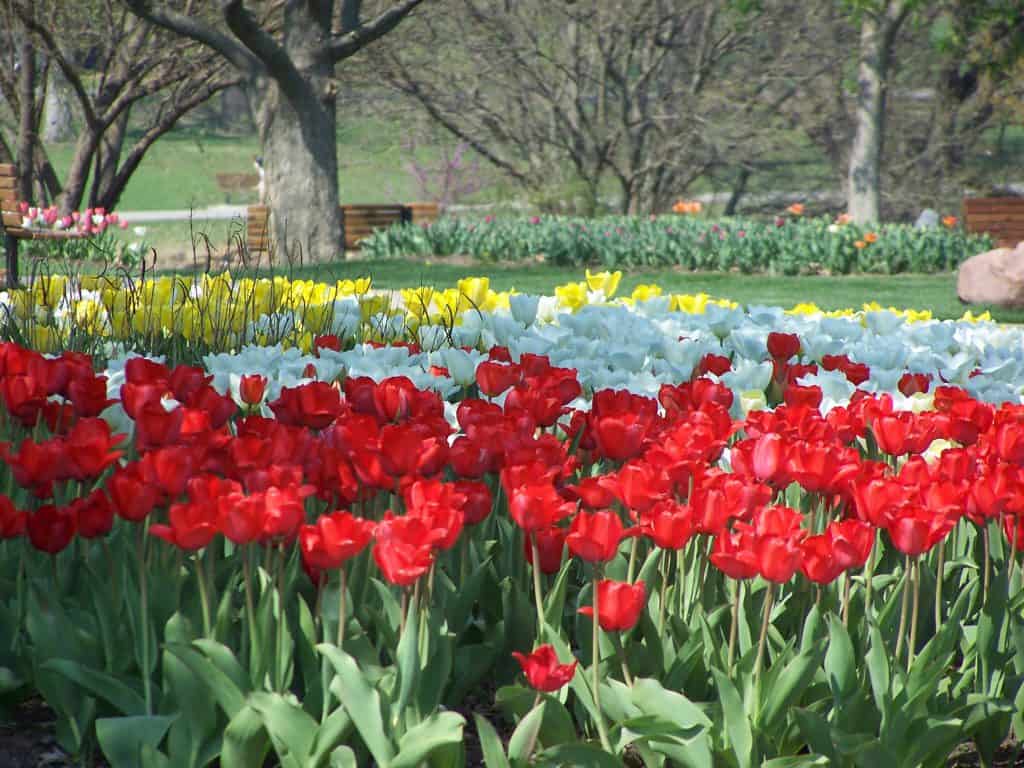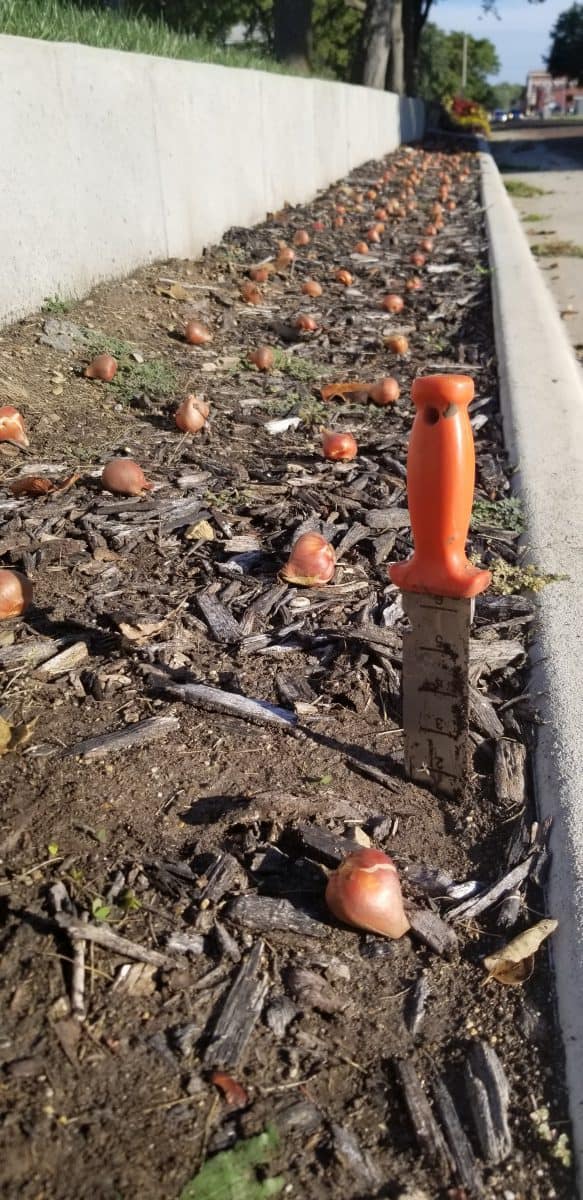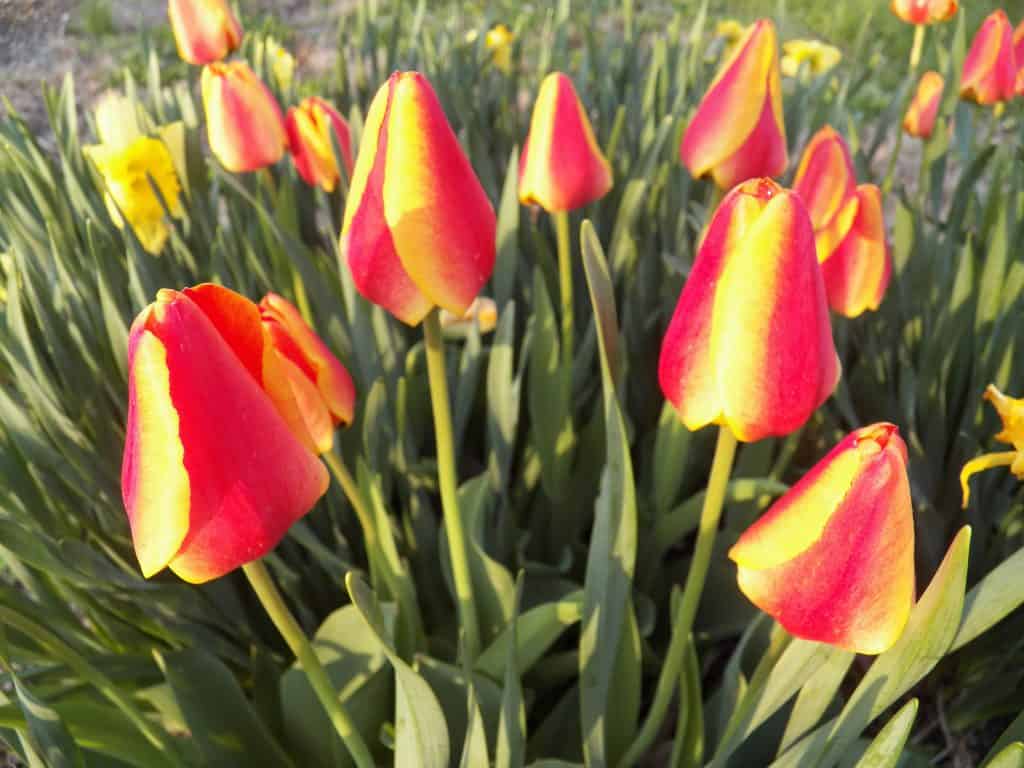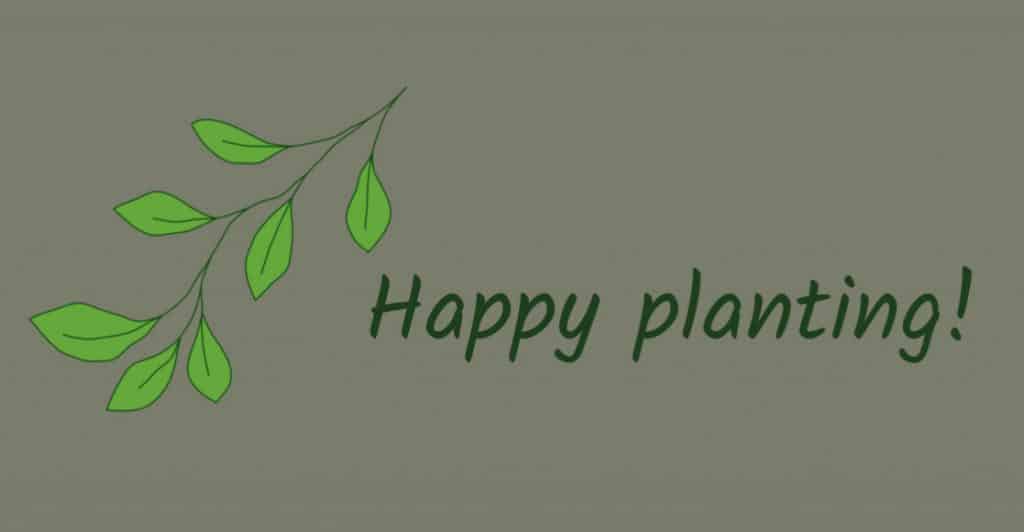September is often regarded as the first month of fall, even though it does not begin until the end of the month. Now is the time for preparing and planting bulbs, so you can have a bigger displays of spring color.

Where to Buy Bulbs
You can pick up bulbs from big box stores, garden centers, grocery stores, and hardware stores. Nearly everyone sells a few bulbs to attract customers to come in.
When you are buying bulbs from the big box stores, be sure to buy them as soon as they are unloaded off the truck. These stores do not put the bulbs in a controlled environment, but rather subject them to the same temperatures and humidity as the rest of the store. They go bad quickly, drying out and rotting.

The best places to get bulbs are mail-order catalogs and independent garden centers, where bulbs are kept carefully to prevent spoilage.
Preparing the Garden for Bulbs

Where to Plant?
Many of us gardeners are impulse buyers, meaning that we buy plants at a whim, not sure where they might go. The nice thing about bulbs is that they can be tucked into almost any space in the garden.
As a maintenance supervisor, I have planned spaces in commercial landscapes where tulips are planted each fall, then ripped out after blooming for summer annuals.
Landscapers often plan big drifts of daffodils, tulips, or snowdrifts into landscapes to bridge the gap between winter and spring. Alliums, fritillaria, and hyacinths can be tucked into small spaces for big impacts.
If you are planning on planting in a drift or a mass planting, preparing the soil beforehand is important.
Prepping the Soil
Bulbs like to be in well-drained soils, so prepping the bed is a necessity. If planting bulbs in a mass or drift, you want to start with a simple soil test. This can be done by collecting a bag of the soil in the spot and sending it to your local university soil lab.

Once you have your soil test back, you can see what amendments are needed. Soil tests tell you the percent of organic matter, plus nutrient levels. They also tell you what the pH level of your soil is, and how to correct it. See How to Read a Soil Test.
Most bulbs can handle higher pH soils, from 5.5 to 7.5. They need calcium and phosphorus to thrive, plus organic matter. If the clay content of your soil is high, mix in leaf mold or compost.
Mix in a dusting of Bone Meal to the soil before planting, this will help the bulb flourish.
Mulching
After the bulbs are planted, it is important that you cover the area with mulch. I possible, use a different mulch than the rest of the garden, so you know where your bulbs are.
Organic mulches like pine straw, sawdust, and chopped alfalfa are great for newly planted bulbs.
What Bulbs to Plant
Now that you have your site and soil ready, it is time to pick out what bulbs to plant. There are many species of spring-blooming bulbs, and thousands of cultivars to choose from.
Tulips
Tulips are one of the world’s favorite bulb, and you will see them planted in mass. Garden centers, botanical gardens, and city parks put in millions of tulip bulbs annually. Historically, tulips have been as valuable as gold and jewels. Nowadays, tulips come in a variety of colors, sizes, bloom times, and styles.

Every place that sells bulbs, sells tulips, usually at least 6 varieties. But there are hundreds in mail-order catalogs. However, to get bulbs by mail, you should have ordered them by late July, for they often sell out of popular varieties quickly.
Tulips are best mass planted or naturalized into lawns and meadows. They can also be planted in large containers for spring color.

Daffodils
These are my favorites in the garden. While yellow daffodils are common, I like the pink and white ones. They are great planted under trees, in masses or drifts, and mixed into flower beds.
Daffodils, like tulips are very popular and come in hundreds, if not thousands, of cultivars. Most varieties grow and bloom in clumps that are about 16 inches tall by 24 inches wide. But, there are also miniature cultivars that grow only 6 inches tall.
Hyacinths
My brother always called these “sniffacinths”, because the fragrance is sublime. We would always pick out some of these to grow for our mother. Now, I add them to landscapes when possible for their sweet smells.
There are not as many cultivars of these as with the above 2, but they are still popular. Their size makes them valuable, because they rarely flop in heavy rain or windstorms. They grow 6 to 10 inches tall.


It is important to note that the bulbs of hyacinths contain a substance that can irritate your skin, so it is important to wear gloves when handling, if you are sensitive.
Alliums
These can be tall and majestic, growing 4 feet tall, or small and delicate at 12 inches. Alliums come in a wide range of sizes and colors. The bulbs match the size, large ones have big bulbs. They also make great cut flowers and are very attractive to pollinators.

Plant alliums in full to part sun, in masses or groupings for the best displays.
Snowdrops
Over the years, collectors have been working with breeders on snowdrops, of all things. They are wonderful in landscape beds and large drifts. Snowdrops are also great for naturalizing into wooded landscapes, as they come up and bloom well before the trees leaf out.
Crocus
Crocuses are one the earliest bloomers here, and yet they are often neglected in the bulb world. There are few cultivars, though they come in a wide range of colors. Most people have yellow or purple ones in their yard, planted by past residents.
Crocuses are also great for naturalizing. Plant them in drifts or clumps by trees or along borders. They grow 6 inches tall.


Muscari
Grape hyacinths, also known as muscari, come in a few colors and are frequented by bees in early spring. I have fond memories of a drift of these in the woods by my boyhood home, where my dad threw them instead of planting them. Now they grow by the hundreds in that spot.
These can be planted in the woodland garden, or directly into lawns as they will be done blooming before the grass needs its first haircut.
Planting Bulbs
Once the decision of what bulbs to plant and where to plant them has been made, you need to prepare for planting. Bulbs can be planted successfully from September 1st until the ground freezes solid, as long as the bulbs planted are healthy.
Planting Depth
This is probably the most important thing to planting bulbs, and the reason why so many bulbs do not live long in landscapes. Each bulb has a recommended planting depth, and it is important to follow. The following chart will show you where in the ground each species needs to be.

If planting in masses of drifts, it will be easier to lift whole sections of soil from the ground and place the bulbs, then cover with the soil. When your soil is loose and light, it is easy to space out the bulbs and then use a soil knife or trowel to plant each individual bulb.
What to do When Bulbs are Done Blooming
Maintenance on spent bulbs is simple for most gardeners. I know that many botanical gardens dig up and sell their tulips each year to patrons, before planting summer annuals. Often, extras end up in the compost pile.
Once daffodils, hyacinths, and tulips are done blooming, you can deadhead the spent flowers. Then wait for the foliage to yellow and start to die-down, and remove it at the ground with a sharp soil knife or pruners. Throw the leaves into the compost and wait for next year!




